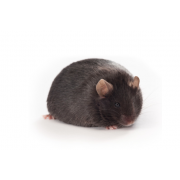Lab animals: Fighting NASH with a New Animal Model
The worldwide obesity epidemic is spawning a number of comorbid conditions. Chief among them is non-alcoholic fatty liver disease (NAFLD). This disorder, characterized by excessive accumulation of lipid within hepatocytes (steatosis) in the absence of significant alcohol intake, is considered relatively benign. However, it is thought to be on the spectrum of chronic liver diseases including non-alcoholic steatohepatitis (NASH), cirrhosis and hepatocellular carcinoma. NASH is a more severe form of NAFLD, characterized by inflammation, hepatocyte ballooning and degeneration, and fibrosis in addition to steatosis. In a recent NASH-specific report, GlobalData epidemiologists predicted an annual growth rate of 0.61% over the next few years and for cases of NASH to increase by more than four million to 65.2 million.
The rapid growth in prevalence of NAFLD has generated considerable research into the pathogenetic mechanisms responsible for disease progression and the search for treatments. Currently, there are no approved therapies for NASH, but it’s not from lack of trying. There are over 400 drug candidates in development that target various stages of disease, with 591 interventional clinical trials at various stages of completion.
Several approaches have emerged in an attempt to recreate NASH in animal models. These include the application of chemical toxins such as thioacetamide, and carbon tetrachloride, feeding lipotropic diets deficient in methionine and/or choline, the use of genetically altered animals (e.g. ob/ob mice), feeding diets high in refined sugar and fat, or some combination thereof. All of these methodologies can be helpful in addressing specific questions regarding the targets and pathways involved.
Each, however, has its drawbacks. The question then arises: Which approach or model is best? This is a very difficult question to answer. Ideally, a model should recapitulate the histopathology observed in the human disease in the same metabolic context. The typical NASH patient is obese, hyperinsulinemic/insulin resistant, diabetic, dyslipidemic (usually high triglycerides and low HDL), and often hypertensive. The problem is that while few patients have been identified with specific single gene mutations, NASH typically arises from a combination of environmental factors combined with a polygenic predisposition to developing disease. Replicating this phenotype in an animal model that results in histopathology consistent with NASH has been elusive.
A marriage of two models
That could change with the introduction of the Zucker Diabetic Sprague Dawley (ZDSD) rat. This model was generated by crossing the popular Zucker Diabetic Fatty (ZDF) with Crl:CD rats. The colony was perpetuated by inbreeding selected obese animals for over 27 generations. The ZDSD presents with polygenic obesity and a metabolic phenotype that can be modulated by diet, in the presence of a functional leptin pathway. The phenotype is an excellent model of Metabolic Syndrome, which is a significant risk factor for the development of NASH. The phenotype develops naturally when the animals are fed standard lab chow. The rats that are obese at an early age become progressively hyperglycemic, insulin resistant, and hyperlipidemic. The development of frank diabetes can be synchronized and accelerated by the application of a high fat diet.
The observation of such a faithful replication of human metabolic syndrome in the ZDSD begs the question as to whether this strain can be manipulated to develop full-blown NASH. Most mouse models of NASH involve long-term feeding studies ranging from 18 – 26 weeks or longer. Sprague-Dawley rats fed a choline deficient, high-fat diet will develop NASH over a shorter time frame; ~12 weeks on diet.
It is tempting to speculate that feeding that same diet to the ZDSD rat in a state of metabolic dysfunction might either develop disease sooner or a more severe manifestation of NASH. Demonstrating NASH by histopathology in the context of Metabolic Syndrome of polygenic origin could rapidly accelerate our understanding of the pathogenesis of NAFLD and NASH.
Hopefully, this will also get effective therapies to the millions of patients suffering from this debilitating disorder. Treating this unmet medical need is of prime importance for the large number of patients in this disease group. Because clinical trials demonstrating efficacy and safety are so long and arduous, the pharmaceutical industry must rely on the best, most translatable preclinical animal models to guide the choice of the best therapeutic candidates. To date, no single animal model has been able to faithfully recapitulate the histopathology of NASH with all the attendant metabolic parameters of the disease found in humans. The emergence of the ZDSD rat may help to bridge that gap.
Article provided courtesy of Charles River. Original text here.





